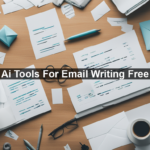In today’s digital age, managing information efficiently is more crucial than ever before. In many professional and academic settings, we often find ourselves sifting through lengthy PDF documents, trying to locate specific data or answers. Fortunately, advanced AI tools have risen to the challenge, offering solutions to automatically read and interpret PDF files. This technology is more than just a convenience; it redefines how we interact with vast amounts of data, boosting productivity and accuracy. Let’s delve into how these AI tools work, their benefits, and some potential limitations.
What Exactly is an AI Tool for Reading PDFs?
AI tools designed for reading PDFs use advanced algorithms to parse text, tables, and images within digital documents, transforming them into a more interactive format. These tools are powered by **machine learning** and **natural language processing** (NLP), allowing them to understand context and answer questions directly related to the content. It’s like having a personal research assistant ready to dig through stacks of digital papers for you.
How Do AI-Powered PDF Readers Work?
To comprehend this, let’s break down the process into simple steps:
This streamlined operation is not only fast but remarkably accurate, thanks to the continuous advancements in AI and NLP technologies.
Benefits of AI Tools for Reading PDFs
Using AI tools to navigate and analyze PDFs comes with a plethora of advantages:
Such advantages make AI tools indispensable, particularly in data-intensive environments where precision and speed are paramount.
Limitations and Challenges
Despite their benefits, AI PDF readers are not without limitations. Understanding these can help manage expectations and optimize their use:
It’s also essential to consider ethical issues, notably data privacy when handling sensitive information. For those keen on a deeper dive, exploring articles on AI ethics can provide further insights.
Choosing the Right AI PDF Tool
When selecting an AI tool to read PDFs, consider the following factors:
Some popular AI PDF reading tools include Microsoft’s Form Recognizer and Google Cloud Vision API, each offering different features suited for specific needs.
Future Prospects of AI PDF Tools
The evolution of AI tools that read and analyze PDFs shows no sign of slowing down. As **deep learning** models advance, expect even greater accuracy and efficiency. The integration of enhanced **machine vision** and real-world language understanding will likely broaden the scope and utility of these tools.
Moreover, the increasing interconnectivity of AI with other emerging technologies like blockchain and IoT creates possibilities for more comprehensive digital ecosystems, revolutionizing how information is accessed, shared, and utilized. To stay ahead of these trends, exploring sites like World Economic Forum’s digital economy insights might be beneficial.
In conclusion, AI tools for reading PDFs offer a game-changing solution for navigating the digital deluge of documents we encounter daily. Whether you’re in academia, business, or just someone keen on efficient digital navigation, these tools present a pathway to sharper insights and more informed decision-making.











